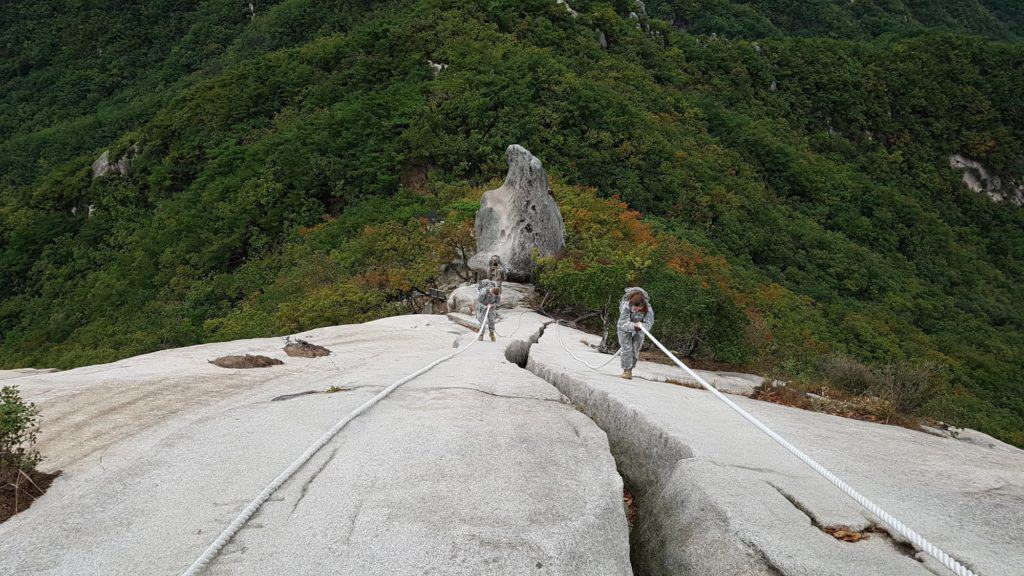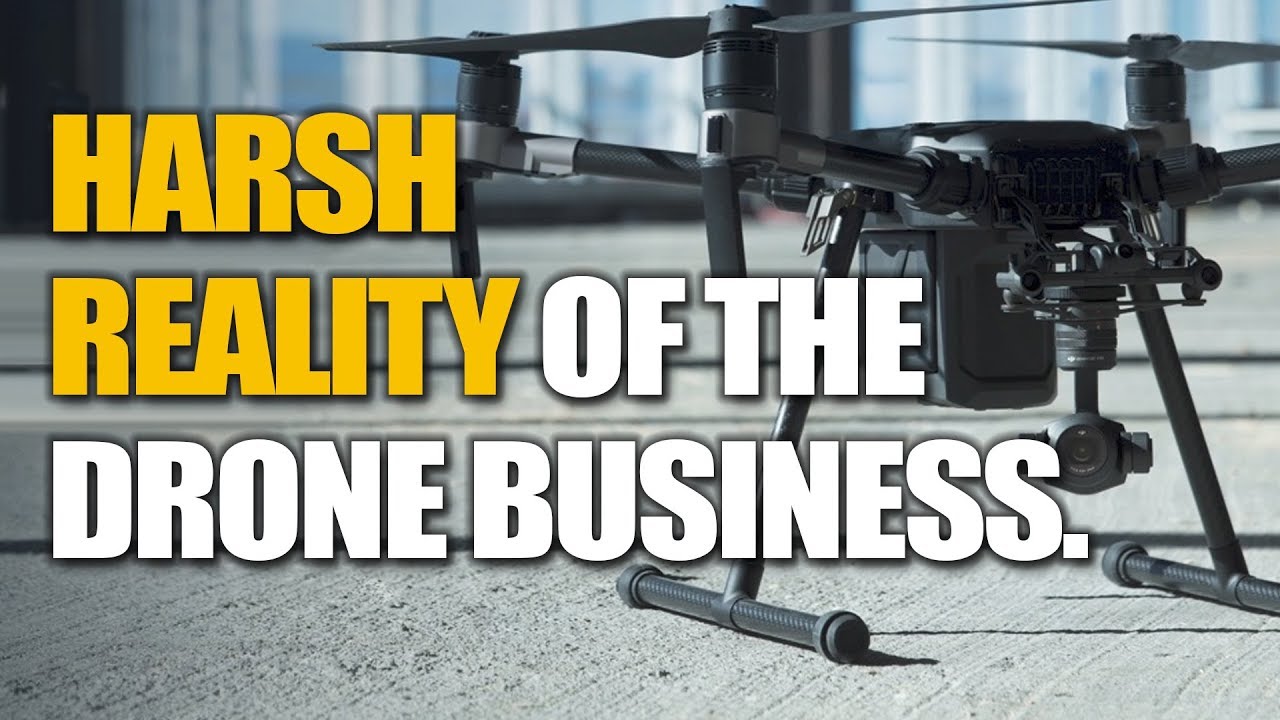The Drone Services Industry Is In Big Trouble. Here Is The One Thing You Can Do To Stop Losing Money
You might not know it, but most drone service companies are losing money.
Three out of four drone services entrepreneurs we have talked to in the last year are either losing money or just paying the bills.
A disruptive shakeup has occurred in the drone industry for some time. The pandemic has squelched capital spending and forced cash conservation in many sectors.
This business pessimism has only exacerbated the pain throughout our fragile emerging drone service industry.
Sadly, the trend has accelerated, and drone service companies of all sizes are hurting. Even the less capital-intensive drone markets have shown signs of deep stress.
How did we get here?
Drones (unmanned aerial vehicle – UAV) first emerged as a military and national intelligence tool.
They were big, expensive, and limited to spycraft and launching missiles on terrorists. But they were inspiring to behold and sparked much imagination about their potential use.
If only they could be smaller and more affordable.
Due to the relentless innovation of technology and open-source developments, several manufacturers began to sell drones.
The first generation of UAVs was really “big boy toys.” For a couple of thousand dollars, anyone could buy one of these machines and show off their flying machines.
Skilled photographers looking for a unique perspective began buying them and showing off their aerial photography and videography skills.
Real estate agents wanted unique shots for their luxury properties and hired drone photographers.
This era saw many current drone entrepreneurs take up the craft and start their drone service businesses.
All that was necessary was a drone, which could be easily purchased, and a client that needed aerial photography or videography.

The Early Regulatory Umbrella
The regulations governing commercial drone flights were very complicated.
The FAA application process for a commercial drone operation required a special exception called the 333 exemption. A 333 waiver was hugely valuable. It was not easy to get. Few operators had them, mainly because of the expense of navigating the complex and lengthy FAA approval process.
The early regulations governing commercial drone use provided an umbrella that allowed operators to charge higher fees to those clients who saw value in the drone applications.
Life was good for those early drone service entrepreneurs.
At a minimum $2,000 daily service fee, one needed a couple of days a week flying to make a six-figure income.
Increasing Use Cases
At the same time, those inclined to use technology for questionable purposes began exploiting drone capabilities.
Unscrupulous paparazzi could now follow celebrities past their walled gates into their estates to get a bird’s eye view.
Smugglers flew goods and contraband over prison walls to the prisoners below.
Drone manufacturers added innovative capabilities such as higher-quality cameras and collision avoidance systems.
The sleek, sophisticated, accessible, and less expensive hardware makes it easy for an amateur with little flight experience to operate these modern marvels safely.
The minimum skill required to fly a drone effectively has declined dramatically, enabled by corresponding UAV hardware and software improvement.
Drone usage mushroomed across all sectors. The drone industry was in full bloom.
Millions of drones came to market each year. And millions learned to pilot those drones.
Use cases multiplied as everyone with a drone described what it could do to curious prospective clients.
Those toy manufacturers became large businesses offering multiple models aimed at amateurs and the emerging commercial drone services industry.
Entrepreneurs crafted hundreds of thousands of websites, peddling drone services. Maybe you were one of those:
Aerial photography? Real Estate Photography or Videography? Drone Mapping Services? Aerial Drone Surveying? Aerial deliveries? Aerial Transportation?
A drone services entrepreneur offered anything you can conceive as possible with a drone near you.
Supply grew dramatically!
At the same time, Regulators worldwide became concerned about the prevalence of mini aircraft in protected airspace. Privacy, safety, and security issues led to regulations by every regulatory agency worldwide.
These regulations had a stunning effect.
First, they made it much easier for anyone to become a commercial operator. The FAA introduced a more straightforward Part 107 requirement for commercial drone operators’ pilot licensing.
Prospective drone operators must take and pass a 2-hour exam at one of the hundreds of FAA-approved testing centers. They are then approved to fly a drone commercially.
The number of commercial licensed pilots increased dramatically. In the first three weeks after Part 107 licensing began in August 2016, the FAA certified 12,000 remote pilots.
Secondly, those drone regulations drove increases in the cost of commercial drone services. Operators needed licensing, had to register their aircraft, required insurance to fly for many clients, had to get clearance to operate in certain areas, and so on.
The simple reality is that the entire drone services stack was much more costly than many early entrepreneurs assumed.
Many early clients who did not want to go through the 333 exemption process and were happy to use an outside drone services partner found it much easier to hire their own “skunkworks teams.”
Supply increased, but demand did not grow as fast, and at the same time, costs increased while pricing declined.

Today’s smart drone services market
That perfect storm of an oversupplied market means what was once a sure way to high returns by riding the drone market trend has become a losing business proposition.
The once-hot drone manufacturing business bell-weather DJI is losing money.
Several other early manufacturing leaders have disappeared. Others have refocused on software or services.
Large sums of early equity and Venture Capital funding chasing after the drone services trends disappeared. By early 2017, more than $ 1.5 billion of VC funds had poured into investments in the drone dream.
(Source: https://www.cbinsights.com/research/drones-startup-funding/)
Most of that money is focused on software and hardware innovation. But by then, three apparent trends were becoming evident.
- The commercial market was most likely to drive the future of the drone market. Good for us.
- Drone hardware will be commoditized. Good for us, but bad for the investors in those hardware startups.
- The value will derive from services. Again, good for us.
( Source: https://www.toptal.com/finance/market-research-analysts/drone-market)
What no one anticipated was the rapid collapse in value. The sharp oversupply and increases in other costs, combined with the slow pace of demand growth and shrinking price umbrellas, were a recipe for a collapse in earnings.
Understanding where others have focused on making money with drones would be helpful.

Is anyone making money? – Drone service verticals and their sustainability
Remember that most early drone pilots and enthusiasts were mostly interested in aerial photography and videography. So, the drone industry emerged and evolved around drone photography and drone video.
Selling drone photography and drone video.
This sector is probably the most common way to make money with drones. Any drone pilot equipped with a decently equipped professional drone (or even a capable amateur version) can quickly be in a position to offer up drone photography and drone video for sale.
The market is saturated with drone pilots now providing or capable of delivering aerial imagery as a service. Stock photography and video sites are filled with drone footage and aerial video for sale or free use.
The requirements for thriving drone photography or drone video business are not significant. Many photographers and videographers quickly acquired the skills to become drone pilots and capture the requisite aerial shots, and now offer their aerial services. Each photographer can promptly become a drone service provider; the cost of entry is so low.
Here is what one of the popular drone pilot training sites had to say about this drone service business:
“The beauty of setting up your own drone business is that the startup costs are fairly low. Professional-grade drones are available to just about anyone from dozens of popular retailers. After the small cost of obtaining a Part 107 certification and purchasing a quality unit, a person can start up drone photography/videography business for well under $2,000. Someone comfortable buying a factory refurbished drone can be up for even less.”
UAVCoach
The result is an ultra-competitive space. The market for drone photography and drone video is large and growing, but so is the number of service providers. Expect the costs and profitability to approach marginal cost over time.
Photographers and videographers with unique eyes for the craft will emerge and build a branded business, but most drone photography services will not go beyond freelancer status.
Aerial Real Estate Photography and Videography for Real Estate Agents.
This drone service was an obvious evolution of the early drone photography and drone video business.
Aerial wedding photography and drone video are other niches similar to the real estate segment. It demonstrates identical market trends, opportunities, and underlying challenges.
So is aerial cinematography or aerial video production for events.
They are not different, just merely specialized niches within the overall sector. No new technology or skills was needed.
The simple reality was that enterprising real estate agents looking for an edge in selling their expensive luxury estates or wanting to provide that commercial real estate client a bird’s eye view of the property were first to recognize the potential here.
A remote pilot could give the agent and client a view from a vantage point not available previously. And because the tools and skills were readily available, it was easy to find a service provider. Costs were relatively inexpensive, and just as with the broad categories of drone photography and drone video, there are no competitive advantages.
Drone photography for real estate is a large sector but is also limited by its value in selling lower-cost real estate properties. Real estate videos, video services, and photography are not a great foundation for building a sustainable drone service operation.
Interestingly, several drone inspection capabilities have emerged tuned explicitly to the real estate market. Drones equipped with sophisticated thermal imaging equipment simplify and enhance roof inspection and other commercial property inspection.
However, thermal imaging sensors are more expensive and require some skills to operate most effectively.
Aerial thermal imaging is a large, growing, and potentially profitable drone market segment. It will require significantly more investments in equipment and operators committed to developing the necessary domain expertise to offer it as a reliable aerial drone service successfully.
Aerial Surveying.
Aerial surveying was a natural extension of the early drone photography and video business. All that market entrants needed was some new technology to improve the precision of the drone data collected.
The drone technology innovators quickly filled the gap by providing Real-time Kinematic (RTK) capabilities on drones. These RTK capabilities improve the precision of position data derived from GPS or other satellite-based positioning systems. Even the first drones included GPS, so this extra functionality made flying drones the perfect drone solution for aerial surveying.
Any drone pilot equipped with their drone license, an RTK-equipped drone, could collect drone data to fill the aerial surveying needs. There are many applications for aerial surveys in various fields, such as archeology, digital mapping, 3D mapping, GIS applications, orthomosaic mapping, and Topography.
The aerial surveying market is enormous and under-penetrated but is quite fragmented. Also, it turns out that domain expertise and specialized skills are required to ensure the aerial data collected is usable. Expect to see larger surveying companies or your local licensed surveyor adapt and develop their drone program and offer aerial drone services.
Construction drone services.
The construction industry drone segment is a natural extension of the aerial surveying capability. This segment represents one of the most significant users of mapping and surveying capabilities, including aerial surveys. However, construction project managers and leadership teams have found a dizzying array of capabilities drones can provide to enhance their projects. Rather than hiring a myriad of slow land surveyors, the construction teams can adopt aerial surveying to produce necessary aerial and topographic models more frequently, with more accuracy than ever before.
Forward-leaning construction companies use UAS modeling to create progress maps and enhanced 3D Models for their clients. With interactive models and maps, clients no longer need to walk around the job site to understand and visualize progress.
Drones are flown over mining and construction sites to build volumetric models tracking large-scale earth movement and other valuable data.
As with the aerial surveying market, this is also a potentially attractive and large segment. Launching a credible outsourced drone service offering also requires a great deal of domain expertise and up-front investments.
Drone Inspections for industrial clients.
A broad range of industrial companies has embraced drones for industrial inspections. The oil and gas industry uses optical gas imaging drones to detect leaks. Power utilities use drones with unique thermal cameras for corona analysis and power line inspections. The telecom operators are using thermal-equipped drones for cell tower inspection services. Solar companies use drones with thermal imaging and high-definition camera combinations to inspect solar panels.
If you are a drone service provider focused on inspections, you know drone jobs are available. However, the market is still in its infancy, and those jobs are not yet repetitive and sustainable.
You also know that the up-front investments in technology, including the requisite commercial drones and building the complete stack, are substantial. Operating in these sectors requires significant liability insurance coverage, sometimes over $10 million face value, to get on the premises.
Building a trusted drone program with a proper drone operation to inspect any of these verticals requires substantial domain expertise. While these markets are growing and will become significant, this trend will play out over a longer time horizon and require well-capitalized drone service providers with patience to build the necessary skills.
Security, surveillance, and video monitoring.
Aerial surveillance is a thing. Indeed, this was the original mission of the first drone operations, albeit for military and national security clients. Those, however, were in-sourced and not a commercial drone service.
A remote pilot can use flying drones to monitor critical infrastructure security and high-value assets. However, few of these operations can afford the standard quadcopter operations with real-time monitoring by a live remote pilot. Instead, tethered drones that can be launched and stay overhead for extended periods or autonomously deployed patrol drones will likely be the winners.
The sheer magnitude of video being collected in real-time makes it overwhelming for humans to review. Instead, expect artificially intelligent analytical tools to provide the necessary sorting and alarms for presentation to a small number of remote pilot operators.
Public safety or search and rescue drone services.
Yes, there are cases of drone jobs in this market. Clients and use cases tend to prefer in-house operations and volunteer services when using external resources.
There will be opportunities for technology providers, such as drone integrators who can combine thermal imagery sensors with professional commercial drones. Or software providers that can deliver tuned analytical tools for the specific needs of this segment.
The Public Safety and Search and Rescue drone segments have tended to be budget-challenged, demand has been unpredictable, and procurement practices limit the value of relationship building for a sustainable business. It is unclear whether this segment could offer attractive opportunities for drone service operators.
Precision agriculture.
Farmers with drone licenses have sought a reliable drone solution for aerial footage and other drone-enabled capabilities. Fortunately, drone technology is available today to meet many of those needs. Drones are used for crop spraying, estimating soil erosion, measuring crop health using NDVI measurements, and informing precision agriculture. The agriculture drone sector is a market that will likely be repetitive when it reaches full adoption. For now, though, it is still in the early stages of development, unpredictable and volatile.
Serving the drone precision agriculture market requires substantial up-front investments. The drone license for spraying must be acquired state by state, for example. While requiring domain expertise and requisite drone skills, the business model must also be lean to meet the agriculture market’s financial challenges.
This will be an attractive market, but innovations like autonomous flying drones or low-cost, low-earth satellite imagery could disrupt that opportunity.
What about all the next cool business ideas?
You are not in the drone service business if you haven’t had a conversation about some esoteric use to which a drone can be put.
How about drone delivery services? Yes. Zipline, a California-based drone company, uses drones to deliver medicine to remote African villages. Drone delivery can be used for packages and for your Pizza. And eventually, drones will be zipping around the controlled airspace above us to deliver various products. This drone delivery opportunity will take a lot longer than we anticipate.
The technology and regulations for large-scale beyond visible line of sight (BVLOS) operations are not in place for this to occur safely and reliably at scale. And when it arrives, this will probably be the domain of much larger drone delivery operators, such as Amazon, UPS, and FedEx, entrenched in the delivery business.
So don’t run out and buy those delivery drones just yet.
Biologists and researchers use drones to count everything from birds to polar bears. Environmental enforcement teams use drones to look for hard-to-detect activities like illegal logging and dumping of harmful substances. African wildlife reserves use these mini-flying machines to monitor and fight unlawful poaching.
What about planting trees? How about spraying mosquito-infested ponds? How about a million other possibilities?
Yes, yes, yes. All possible. All opportunities to enhance staff duties with the use of a drone. But that does not make them businesses.
The big question is whether these are significant, predictable, and serveable markets on which you can build a sustainably profitable business.
At this point, they are all speculative and only for those well-capitalized enough to figure out the solutions and stick around to serve the market.

Is anyone making money in drone services?
To be fair, it’s not all gloom and doom. Yes, much of the drone market is struggling, including many large, well-known brands. That said, there are some well-capitalized and well-run companies in the industry. But they are a rarity and very niche-oriented. They also generally have well-defined competitive advantages and are highly focused.
If you went out many years ago, bought into the technology, and have been busy serving many customers, you may have had several good years behind you. If you think the current tight market is just a cyclical issue exacerbated by the pandemic, you haven’t come to terms with the reality of what’s likely to happen as the epidemic goes away.
If you aren’t prepared for our industry’s rough and uncertain future, you will face a rude awakening as the good old days recede further into the past. The easy, good old days are gone.
What happened with the drone services dream?
A while ago, we wrote a piece on what’s really happening in the drone market. It’s worth reading for some context.
Remember when drones were described as the “next great land rush in tech?”
The Global Drone Services Market was projected to grow by a double-digit compound annual growth rate (cagr) over the next two decades. Among tech investments, these were some of the highest cagr forecasted.
All those stories highlighting commercial drone pilots earning $200,000 per year? Look at the dates those stories were published. That was true in 2017 and even in 2018. Also, remember those stories only profiled the successful entrepreneurial commercial drone pilots. The reality is that this business has been far less lucrative for the majority of its participants.
The global drone service market collapsed due to the unprecedented levels of hype surrounding its possibilities. The market growth just wasn’t there. The fantastic possibility drove those projections, not the customer reality.
Even today, almost every post about the drone market describes new potential use cases. Every article is about the discovery of what a drone can do.
But the fact that a drone can do something unique does not make that need a market large enough to be served, nor does it make the drone a cost-effective way to serve that market.
So, most global drone service market forecasts about the size and how fast this market would grow over any forecast period have been wrong.
Moreover, they will continue to be wrong and overly optimistic about the potential growth until several structural changes occur.
The Covid 19 outbreak did not help. Starting in Asia Pacific and then progressively around the world, the commercial drone market reached a relative standstill as the Covid 19 pandemic progressively shut down the world.
If you are an entrepreneur still struggling to make your drone services business profitable, you are probably grappling with the reality of this challenging market.
The vast majority of this market is in the doldrums, unable to sustain the highest growth and returns that attract high-flying valuations, and is a magnet for venture capital (VC) infusions.
But that is not to say the entire drone market is doomed. The reality is far from it.
The coming shakeout is excellent as the fundamentals for a robust, sustainable drone services industry are in place.
The big challenge for many will be whether they have the wherewithal to cross the current market’s dangerous chasm.
Side Note on Drone Market Forecasts
One of the leading drone market forecasters, in their latest report (published May 2020 and available for $1,500), says the following:
“The drone services procurement category is projected to grow at a CAGR of 58.49% during 2020-2024. The prices are outlined to rise by 3%-5% during the forecast period and suppliers will have Moderate bargaining power in this market.”
“During 2020-2024, the drone services procurement market will register an incremental spend of about $ 18 billion.”
One of the top-ranked research reports on a Google search for the drone services market says:
“Drone Services Market worth $40.7 Billion by 2026”
Another report says the following:
“The global drone services market is projected to grow from $9.56 billion in 2021 to $134.89 billion by 2028 at a CAGR of 45.9% in forecast period”
Really?
What are they thinking?
Where do they get those numbers?
Here are some facts about the largest businesses in the industry.
On February 16, 2021, Terra Drone, based in Japan, which describes itself as the world’s leading drone solution provider, announced raising $14.2 million in series A funding. In their press release, here is what they had to say:
“Last year, Terra Drone was recognized as the ‘No 1 Global Remote Sensing Drone Service Provider’ in the ‘Drone Service Provider Ranking 2020’ by Drone Industry Insights, a global drone market research company. Although severely affected by Covid-19, Terra Drone increased its revenue and profits in 2020. The consolidated annual revenue is approximately USD 20 million.”
DJI is the largest drone supplier, with an estimated 70% of the world’s consumer drone market as of March 2020. DJI is estimated to be $3.83B in 2021.
These are among the largest companies in the industry. We would have to add a lot of these to get anywhere near the numbers the forecasters are estimating.
If you really want to understand what’s happening in the drone services industry, you need to ask someone running a real drone service business!
Those forecasts? Balderdash!

The challenge of building a sustainable drone services business
Google thinks drone services are a local business. Search the term on Google, and you will find their answer is a reply in context to finding a drone services business near you.
In other words, Google thinks drone services are predominantly aerial photography and aerial videography. Photographs for real estate, weddings, and other events are Google’s primary assumptions when considering our business.
That may be the most common but not the most profitable or consequential.
We might argue that it’s easier for a photographer to learn drone craft than for a drone operator to learn photography.
There is little competitive advantage for anyone trying to build a drone services business focused solely on photography or videography needs.
That does not mean that aerial photography and videography are not good businesses. They are excellent small businesses, akin to mom-and-pop operations or a local retailer. But they do not currently make sense as an enterprise offering.
On the enterprise side, there are similar challenges.
Unable to find capable service partners and unwilling to wait for drone service companies to build capabilities, many enterprises are experimenting with their in-house teams.
As mentioned earlier, the shift from 333 exemptions to Part 107 made it easier for them to do so. The additional 100,000 or so newly certified commercial drone pilots make it easier for those companies to hire their own.
But drone services are not just about buying and hiring a pilot. The entire service stack is much more complicated and costly than many enterprises understand. If the full accounting is in place, many will find their internal costs no better than external offers and the private ownership a potential liability rather than a competitive advantage.
As in air transport, not every company has built its in-house aircraft fleet. Many large businesses rely on shared outsourced air fleets such as NetJets to carry their executives from place to place. Or rely on commercial aircraft for common destinations. So, too, will the drone services requirement evolve.
The largest enterprises will build and afford their in-house drone services stack, but many won’t.
But this transition could be lengthy.
All those great ideas and conversations you are having with potential clients about how drones might help them will take some time to come to fruition.
To survive, drone service operators must navigate an extended consolidation period with limited demand and high operating costs. That requires focus, a clear understanding of what competitive advantage they will pursue and offer, and the economic foundation to survive.
Dealing with the elephant in the room
The drone services industry and the market are unhealthy and will be for the future forecast period until we deal with the elephant in the room.
Who amongst us thinks we should pay the same price for a new Tesla and a small drone that will only fly 30 minutes at best?
Our drone industry cannot grow quickly because we have a single dominant supplier who may be good at producing consumer-grade drones but has shown little capacity for understanding and developing technology appropriate for the professional drone service operator.
DJI is a Chinese-based drone supplier, and the world’s largest user of drones has publicly declared their concern over the technology and sourcing of drones. This uncertainty should have created opportunities for alternative suppliers, but they have emerged slowly.
Better technology supply for industrial drone users is a necessary condition for the drone services market to take off.
What can you do about this challenging drone services market?
Let’s face it. The Covid 19 impact is still being felt, although it will improve over time. The airline industry and manned aircraft sales are beginning to recover.
All of us will have to find more scaleable paths to sustainable recurring revenue drone service models.
Let’s assume you have enough financial support to reach the other side.
Let’s assume you have done everything to streamline your operations and cost structure to make your investment last longer.
That will not be enough to sustain you.
You will only make it to the other side, competing with other enterprises that are capable, well-financed, and more robust competitors.
The one thing that will determine your success or failure on the other side is the existence of a well-articulated value proposition that you can deliver with a unique competitive advantage.
Why does your value proposition have to be well-articulated?
That’s obvious. With social media and the internet, anyone can appear capable of anything. The differentiator is what Google looks for when they answer a question from someone searching for “drone services.” Who is the most credible, capable, and authoritative provider for what the market is seeking?
You will have to be astute at enterprise marketing and selling. You must be savvy at talking to executives and the front line. Expect to have crisp answers for lawyers, accountants, and other stakeholders.
Those answers can’t be the squishy answers that many get away with today. They will expect to see you bona fides. Have you worked in this vertical? Flight and service records will demonstrate your experience and ability to do the work safely and accurately. You will need domain experience.
The enthusiastic claim that you can do anything will not cut it. Faking it for Google won’t, either.
You must be able to articulate and show what you have done!
Why do you need a competitive advantage?
If you can’t answer why the client should pick you instead of someone with a competitive advantage, then be prepared to be pushed into the commodity category and expect to watch your market share dwindle as you are swept into the dustbins of this industry.
What differentiates you in this competitive landscape if you compete for a real estate photography gig? Is it your photography skills? Can you be cheaper than a college student with a flying drone and a Part 107 commercial drone pilot’s license?
Being first at doing something is not necessarily a sign of a sustainable business unless translated into a significant competitive advantage.
For real competitive advantages, you must show the clients that your solution either costs less than competing choices, is of valuable quality beyond others available, or can be delivered faster.
Each competitive advantage has complications and will require a well-designed operating model to deliver those results consistently.
They also have limitations.
Faster delivery because you are local does not matter if the client can schedule their requirements well into the future.
In many situations, the clients require a minimum level of quality, which everyone must meet. To differentiate yourself on quality, you must translate your capabilities into benefits they can’t achieve with others.
You may be creating enormous value for your clients with your drone services, but if others are willing to provide similar services at their costs, that is the benchmark against which you will have to compete.

One thing you can do to stop losing money in your drone services business
Let’s face it. Some drone services businesses won’t make it and must close up shop.
Do you have enough cash, or can you raise enough money to handle the losses while waiting for the business to turn around?
Once convinced that you are in it for the long haul, you must work diligently to streamline your operational cost structure. And you have to do so without affecting your quality and safety.
Examine every piece of your cost structure. Ensure you fully account for everything you are spending to run this business. Don’t forget the website hosting fees or the SEO costs to help google rankings. Email services? What about battery replacements? Every expense should be included and understood.
Be rigorous and realistic in developing your costing and pricing structure for the business.
Some of you might be inclined to accept less-than-profitable business, but that only works if you have large fixed costs that can be spread across many projects. In this market, you want to avoid those fixed overhead expenses. Be rigorous in evaluating whether an unprofitable business now will be useful for you in the future. If it won’t, resist the temptation to serve the unprofitable business.
You must conserve your cash.
Don’t buy the latest fixed-wing drone or remote sensing technology for every client trial unless you understand the real market dynamics and are convinced you can use it to serve a steady book of business.
Remember what got us here. Many of my friends went out and bought all the cool equipment. With low utilization, that does not seem such a good idea now.
To survive, you will need a lean operating cost structure.
The one thing you need to do right now is ruthlessly refine your cost structure and operating plans. Partner with others where it makes sense, share opportunities, pool resources, and avoid spending too much learning new tricks that don’t have a clear path to revenue and profitability.

How we can help
We understand the challenging environment and are blessed that we can sustain our business through this dark patch.
We also know there is a lot of good that this business can do to make the world a better place.
We are committed to improving safety by working with search, rescue, public safety, and disaster recovery teams.
We have a significant effort to improve environmental outcomes in the oil, gas, and energy markets.
We have invested heavily in developing a robust technology stack, including professional drones and advanced drones with extended flight time, long-distance communication and video transmitters, specialized cameras, and practical applications built on a tuned software platform for data management with enhanced security.
We want to do what we can to help those interested in working in similar spaces. We offer our lessons learned wherever we can.
We know that many in this business will not survive. We also know that we do not have the capability to partner with everyone. We must be selective and work with those with a meaningful chance of reaching a sustainable position.
For drone services businesses with a shared interest, we have a partnership program that provides mentoring, co-marketing, shared resources, pooled purchases, and other benefits to sharpen current offerings.
If you feel committed to staying in this business and are resolved to reaching the other side of this current chasm, please reach out to us. We will share with you real customer opportunities and cost-saving benefits.
Thinking of starting a drone services business?
So far, we have covered the drone service industry challenge for those already in the business.
Some of you may be new to this and may be inclined to assume that the troubles of the drone services market are behind you. If you are in that position and thinking of starting a drone services business, you will find the following video interesting.
It provides some good advice for you.
We can help each other
You can probably build your drone business on your own. You will definitely build it faster and more profitably if you work with the right partners. We can help. No cost or commitment.

Leon Shivamber
Partner
Advisor, Entrepreneur, Strategist, & Transformation Agent

